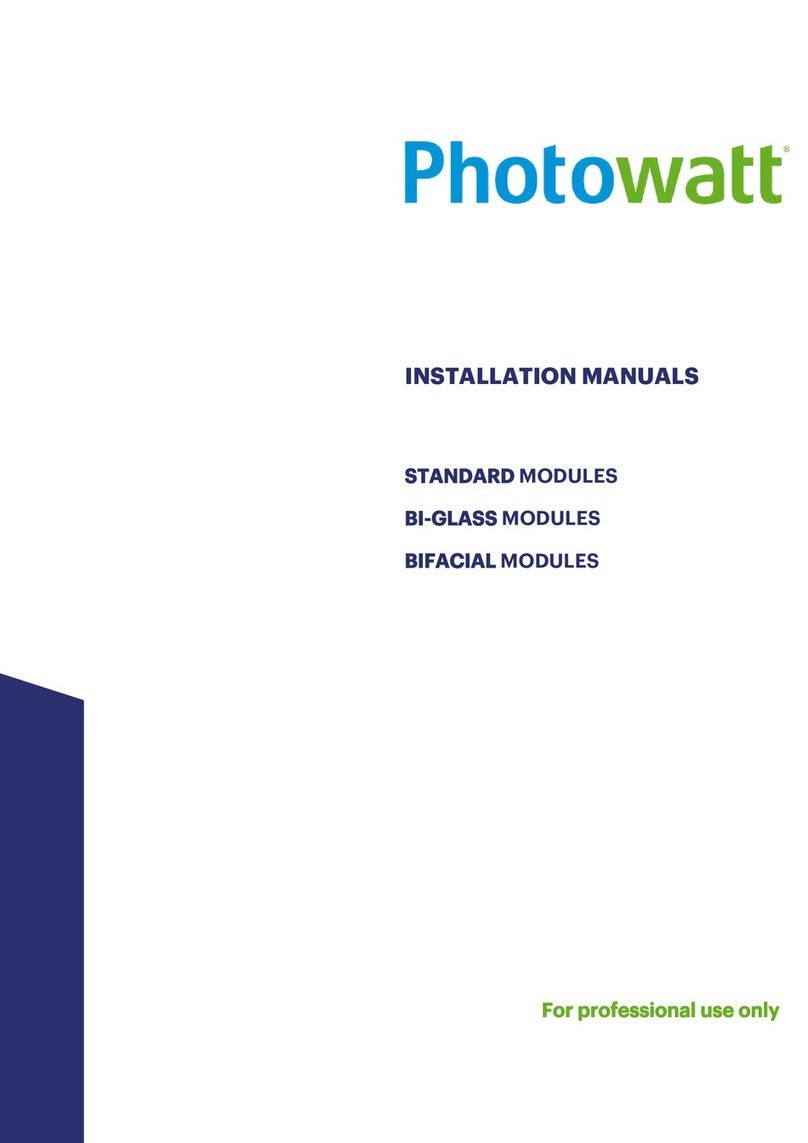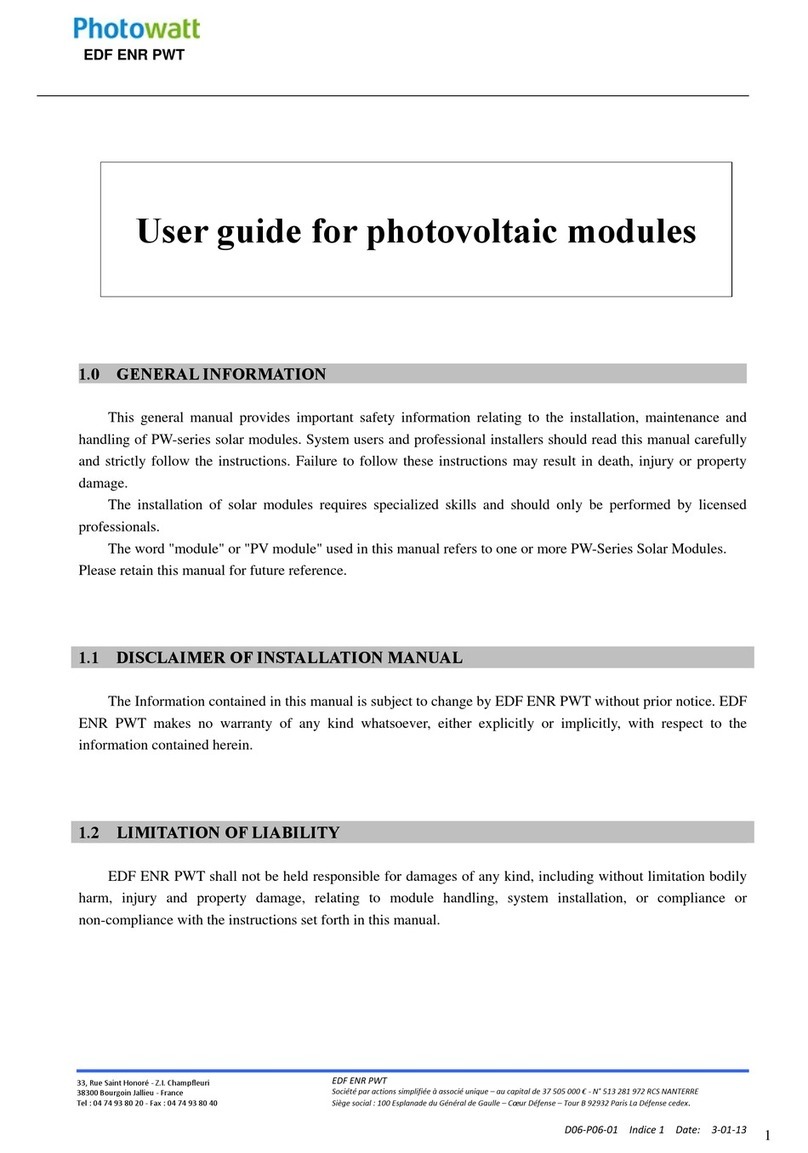
D84-P06-01 GB R3 21/04/2021 www.photowatt.com
6
5.0
MODULE INSTALLATION
PRECAUTIONARY MEASURES AND
GENERAL SAFETY
• Prior to installing modules please obtain information
about any requirements and necessary approvals for
the site, installation and inspection from the relevant
authorities.
• Check applicable building codes to ensure that the
construction or structure (roof, facade, support, etc.)
can bear the module system load.
• EDF ENR PWT bifacial double glass solar modules
have been qualiied for Application Class A (equiva-
lent to Safety Class II requirements). Modules rated
under this class should be used in systems operating
at voltage above 50V or power above 240W, where
general contact access is anticipated.
• EDF ENR PWT bifacial double glass modules have
been certiied as Type 3 or Type 13 according to UL
1703, Type29 according to UL 61730 and as Class A or
Class C for ire performance according to IEC 61730-
2 for ire class performance, please refer to the data-
sheet or the product nameplate for the detailed types.
• Consult your local authority for guidelines and re-
quirements for building or structural ire safety.
UL 1703 SYSTEM FIRE RATING REQUIREMENTS
• The ire rating of this module is only valid when the
product is installed as speciied in the mechanical
mounting instructions.
• When installing the modules, ensure the assembly is
mounted over a ire-resistant roof covering rated for
the application.
• Photovoltaic systems composed of UL1703 or UL
61730 certiied modules mounted on a UL2703 certi-
ied mounting system should be evaluated in combi-
nation with roof coverings in accordance with UL1703
or UL 61730 standard, with respect to meeting the
same ire classiication as the roof assembly.
• Mounting systems with a System Fire Class Rating
(Class A, B or C), tested in conjunction with ire rat-
ed “Type 2” or “Type 13” or “Type 29” rated modules,
are considered acceptable for use with EDF ENR PWT
modules, provides the mounting system does not vi-
olate any other requirement of this manual.
• Any mounting system limitations on inclination or
accessory required to maintain a speciic System
Fire Class Rating should be clearly speciied in the
installation instructions and UL2703 certiication of
the mounting system supplier.
ENVIRONMENTAL CONDITIONS
• The module is intended for use in general open-air cli-
mates, as deined in IEC 6072121: Classiication of en-
vironmental conditions Part 21: Environmental condi-
tions appearing in nature. Temperature and humidity.
• Please consult the EDF ENR PWT technical support
department for more information on the use of mod-
ules in special climates, such as an altitude greater
than 2000 m, heavy snow, severe hail storm, hurri-
cane etc.
• Do not install modules near open lames or lamma-
ble materials.
• Do not immerse modules in water or constantly ex-
pose modules to water (either fresh or salt) (i.e. from
fountains, sea spray).
• Exposing modules to salt (i.e. marine environments)
or sulfur (i.e. sulfur sources, volcanoes) incurs the
risk of module corrosion.
• Do not expose modules and their connectors to any
unauthorized chemical substances (e.g. oil, lubricant,
pesticide, etc.), as modules may incur damages.
• Failure to comply with these instructions will void
EDF ENR PWT warranty.
• EDF ENR PWT modules have passed salt mist cor-
rosion resistance test according to IEC 61701, but
the corrosion may still occur on where the mod-
ules frame is connected to the bracket or where the
grounding is connected. Should the installation loca-
tion be near the ocean, EDF ENR PWT recommends
stainless steel or aluminum materials be used in the
areas with direct contact with the PV modules, and
the connection point should be protected with anti-
corrosion measures. For more information, please
contact EDF ENR PWT technical support team.
INSTALLATION REQUIREMENTS
• Ensure that the module meets the general technical
system requirements.
• Ensure that other systems components do not dam-
age modules mechanically or electrically.
• Modules can be wired in series to increase voltage or
in parallel to increase current. To connect modules in
series, connect the positive terminal of one module
to the negative terminal of the next module. To con-
nect in parallel, connect the positive terminal of one
module to the positive terminal of the next module.
• The quantity of bypass diodes in the module’s junc-
tion box provided may vary depending on the model
series.
• Only connect the quantity of modules that corre-
sponds to the voltage speciications of the inverters































